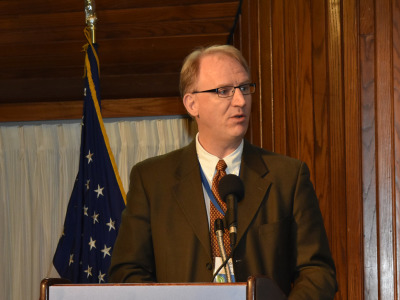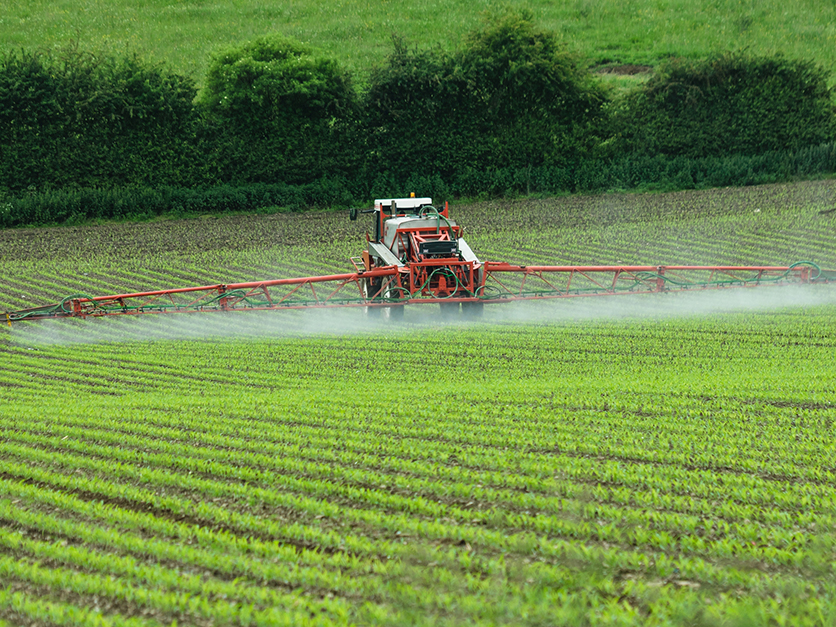Mike Massey, an executive with a small pesticide production facility in Louisiana, is already struggling to keep his glyphosate business as a result of California court judgments that blamed the herbicide for causing cancer in some people who applied it.
Now, with no end in sight to the trade war with China, he’s worried President Donald Trump is going to slap a new 25% tariff on the critical glyphosate acid that his company imports to make glyphosate salt, the active ingredient in Roundup, which is widely used on soybeans, cotton, corn and other crops. The U.S. tariff on the Chinese glyphosate is now only 3.7%.
Glyphosate is one of 28 pesticide product lines that are on a list of $300 billion in Chinese imports that Trump is threatening to hit with tariffs of up to 25% starting next month, using the president’s Section 301 authority. Other commonly used herbicides on the list include atrazine, 2,4-D and dicamba.
The tariff on “glyphosate moves us toward a monopoly” by a single U.S. producer, which is Bayer, Massey told a panel convened by the U.S. Trade Representative’s office to review proposed exclusions to the list of targeted products. A series of hearings spanning seven days ended Tuesday.
CropLife America, which represents pesticide manufacturers and distributors, and RISE (Responsible Industry for a Sound Environment), a trade group that focuses on specialty chemicals, are appealing to USTR to exempt the pesticides from the tariffs, saying that a 25% duty would cost the pesticide industry $393 million.
“Many of the chemicals subject to the new proposal are simply not available from American sources” and “many others are not reasonably available from sources outside of China in the volumes necessary and within a practicable time period,” the groups say in formal comments to the agency.
Chris Novak, president and CEO of CropLife, told the USTR panel, which included representatives of the Agriculture and Commerce departments, that the impact of the tariffs would ultimately trickle down to farmers and consumers, though he didn’t offer an estimate of the increased cost.

Chris Novak, CropLife
“We believe that imposing tariffs on key pesticides used by farmers and consumers will disproportionately burden US interests while having little effect on China,” he said.
He went on, “American farmers are already suffering in the wake of catastrophic weather events and reduced market opportunities. The proposed tariffs will only exacerbate these problems.”
Trump has not backed off his threat to impose the tariffs, although there are hopes that the trade negotiations with China could get back on track when Trump meets later this week with Chinese President Xi Jinping on the sidelines of the Group of 20 summit in Osaka, Japan.
In a briefing on Trump’s plans for the G-20 meetings, a senior administration official emphasized Trump was “quite comfortable with any outcome” of the discussions with Xi and that the U.S. economy hasn’t been hurt by the trade war.
“As the President has said many, many times, and I’m sure he’ll make clear again, is that the purpose of these discussions is to rebalance the economic relationship in a way that protects U.S. economic prosperity and workers,” the official told reporters. “And of course, that also means the kinds of structural changes that would need to take place to protect intellectual property.”
The roster of 28 pesticide lines that could be hit with new tariffs has been expanded from a shorter list that was initially targeted but later excluded during a previous round of Section 301 tariffs.
According to the CropLife/RISE filing, Chinese products accounted for more than three quarters of the products that were imported for the 28 pesticide lines.
Chinese imports accounted for 90% of imports under the tariff code that includes triazine herbicides, including atrazine, used on wheat, corn, potatoes, soybeans and fruit crops. None of the triazine chemicals imported under that tariff code are available domestically.
Eighty-three percent of imports under the tariff code that includes glyphosate came from China. The glyphosate imports from China were valued at $392 million in 2018, according to CropLife/RISE. Imports from China of all the 28 pesticide lines, including glyphosate and triazines, totaled $1.57 billion.
Massey, who is vice president of Ragan and Massey Inc. in Ponchatoula, La., told the USTR panel that environmental regulations and other regulatory barriers make it impractical for other companies to start manufacturing the glyphosate acid.
“We do not expect any new sources to invest to overcome these barriers to entry to provide domestic production,” he said in his prepared remarks.
For more news, go to www.Agri-Pulse.com.


